- NEW DVD Series – Stone Setting with Bezels
- Tube Set Charm by Kim St. Jean
- Prong Basket Pendant by Kim St. Jean
- NEW DVD Series – Stone Setting with Cold Connections
- New DVD Series – Stone Setting with Wire
- NEW DVD Series: Introduction to Stone Setting by Kim St. Jean
- Featured Tool: Bracelet Bending Plier
- NEW Dvd by Eva Sherman
- Fun, Fast Fold Forming DVD Series
- Double Band Ear Cuff from Alex Simkin
Coiled Wire Jewelry Series – Part 2 :Egyptian Coil Bracelet
by Judy Ellis, Wirejewelry.com
Wire Jewelry Tip for May 11th 2016
Egyptian Coil Bracelet – The Basics
by Judy Larson
You may have seen our post on Monday that introduced a 3 Part Series about Coiled Wire Jewelry. In Part 1 we looked at the history or Coiled Wire Jewelry and learned how New is really Old when it comes to using this kind of wire jewelry element.
Today we have Part 2 of that series, and Judy shows us how to make an Egyptian Coil and then fashions those coils into a bracelet. Take a look!
Judy Says:
Constructing an Egyptian coil piece of jewelry can be daunting, but by following a few simple steps, your jewelry project can be perfect every time. It is important to read the entire tutorial before starting.
Materials:
- 20 gauge round wire-two to three types (The above bracelet is made of copper, silver and bronze wire.)
- Closure of your choice-toggle used here is 30x20mm
- Four to six 6 mm 16 or 18 gauge jump rings
Tools:
- Flat nose pliers
- Chain nose pliers
- Round nose pliers (2 pairs)
- Soft jaw pliers
- Flush cutter
- Ultra fine point Sharpie marker
- Ruler
It is a good idea to make the coil units from different wires so you know how each wire behaves. The first thing to practice will be making spirals, which will be made into charms that can be added to the bracelet if you wish. To get a feel for the wire, make one each of the different wires you are practicing with.
Directions:
Step 1. You can use either a chain nose or a round nose pliers to start the center of a spiral. There are pros and cons for the use of each.
Try both to see which works best for you. Each piece of wire used for the charms is straightened and cut 2″ long (flush cut on both ends).
Chain Nose pliers:
NOTE: Make sure that the tip of your pliers is very fine to obtain the smallest center loop possible. Tightly grasp the very tip of a 2″ piece of wire with the tips of the pliers. Twist the tips of the pliers while pushing the wire with your thumb, creating a partial loop shaped like a “P.”
Round Nose Pliers:
NOTE: The jaws of some inexpensive pliers, and even some expensive ones, have tips that are not the same size. If you have a pair like this, use the same tip throughout your project. Round nose pliers will not grip the wire very well, but the darker satin finish pliers seem to have more grip to them with less hand pressure on your part than shiny ones. Tightly grasp the very tip of a 2″ piece of wire with the tips of the pliers. Twist the tips of the pliers while pushing the wire with your thumb, creating a loop. Shift the pliers and continue pushing the wire around the loop, creating a drooping “P.”
Step 2. Grasp the wire loop with the soft jaw pliers as shown, with just a bit of the loop showing. Hint: The closer to the hinge you grasp the wire, the less pressure you need to exert on the pliers to keep the wire from slipping. Push the wire tail around the outside of the loop. Loosen your grip on the loop, shift the loop, grasp again, and push the wire tail around the outside of the loop. Continue in this manner until there is ½” of wire left. Note: When soft jaw pliers are new, the surface is more slippery than when they have been used a while. You may have trouble with the coil slipping if you hold it close to the tip of the pliers. It may be easier for you to make the coil closer to the plier hinge. An added benefit is that you do not have to exert as much pressure to hold the wire there.
Step 3. Grasp the tip of the wire tail with your round nose pliers. Rotate the pliers back toward the spiral, creating a loop.
Make the Links:
The important thing to remember when making the links is to complete each step with all the wires before going on to the next step.. That way, all the links will be as much the same as possible.
Step 1: Straighten and cut 7¼” wires for the links. There are 22 links in the 7¼” size medium bracelet shown: 8 each of silver and bronze and 6 of copper. You can add or subtract links at the end, if needed. Note: The length of bracelet you need, how you make the bend in Step 10, and the size of the closure you use will all contribute to how many links you will need to make your bracelet.
Step 2: Measure and mark the center of all the wires.
Step 3: Center the mark at the base of the jaws of your round nose pliers. Gently grasp the wire with the pliers and push the wires around the barrel with your fingers, overlapping the ends.
Step 4: Using your thumb, push the crossed wires up to the pliers.
Step 5: Use another round nose pliers to make an “eye” by pinching the wires together where they cross. A rounded eye helps the chain hang and curve nicely and gracefully.
Step 6: The “eyes” may not all be centered above the wire tails. Using your flat nose pliers, grasp the wires as shown at the bend below the eye. If the eye is not centered above the wires, use your thumb to push it into place. Complete the next step before going on to the next wire.
Step 7: Using your flat nose pliers, grasp the wires as shown. Grasp the wires with your fingers and pull outwards, straightening them.
Step 8: Most of the wire units you just made will not have even ends. Find the one that is the most uneven, like the one on the right in the photo. Flush cut the ends of that one. It should be close to 3½” in length. Use it as a template to cut all the others.
Step 9: Using the sharpie marker, mark each wire unit 5/16″ in from the loop end.
Step 10: Grasp the wire unit with your flat nose pliers so that the mark on the wire is just outside the edge of the pliers jaw. Using your thumb, push the wire ends away from you, over the pliers jaw, creating a curved 90 degree bend. Note: It is critical to make all the bends in this step at exactly the same place on each wire unit.
Step 11: Make a small loop curling outward on the end of each wire.
Step 12: Grasp the loop with your soft jaw pliers and spiral the wire to the outside of the wire unit, re positioning the pliers as needed, until the top of the spiral coil is even with the 90 degree bend made in Step 10. When making each spiral, you may find that the coil is not to the side. Just twist it out and continue until you finish
It is important to make sure that each unit is not misshapen, like the one in the photo to the left. Bend each unit into shape so they all look like the photo to the below.
Step 13. The links will be put together in the order shown in the photo below.
Follow the photos below to link the units together.
Step 14: After linking 6-8 units, they will look like the photo to the left below. They may start to get “kinked up” so you may want to press several part way into place (next step) to make the linked chain easier to handle before adding more links. Below you see that some of the links have been folded over already.
Step 15: NOTE: The last two linked sections should NOT be flattened until the chain is the length desired. Do NOT hammer the chain. If you want a hammered appearance to the links, hammer the coiled portions only BEFORE linking.
The 90 degree bend made in Step 10 makes “folding” the spiral coils over very easy. The bend in each link should still be rounded, not flattened. Adjust each spiral after the chain is completed. In this tutorial, each of the links should overlap each other like scales.
Hold the chain in you left hand. Place your left thumbnail on the underside of a link. Use your right thumb and pointer finger to bend the coils around your left thumbnail. Use both thumbs to push the coils down into place, taking care to center the coils over the eye on the back side.
Try to avoid spreading the coils out, as in the photos to the far left. If this happens, try to use just your fingers to push them back together. If this does not work, you may need to use your soft jaw or flat nose pliers to move the spirals over toward center. Keep pushing until the coils touch.
The copper coils, left, are not close enough yet, but the bronze and silver are.
Step 16: You will notice that after bending all the links into position, the chain becomes more flexible and slinky. You can even easily wrap it around your finger. Use a scrap piece of wire to hang the chain from. You will then be able to see what links need to be adjusted for the chain to hang evenly straight.
The front and back sides of the connected and folded over link chain are shown below.
Step 17: Use a jump ring or two to attach the toggle to one end of the links. You will need to make a chain half the width of the t-bar to attach it to the other end of the links.
Additional Egyptian Coil Tips
Hammered 20 Gauge Wire Links
If you hammer your wire out to 1½-2 times the original width of the wire and then twist it, it can be used to make Egyptian coil links.
The links on the right were both made with 20 gauge wire units cut to 3½” as in Step 8. Notice that the twisted wire link is larger than the plain wire.
Using Heavier Gauge Wire:
This link can be made with heavier gauge wires but those wires are more difficult to spiral nicely. Many times the center becomes teardrop shaped. There is a way to avoid that. However, this technique should be done only on solid or filled wires, not plated ones. Only a round nose pliers is used for this technique. This technique was not done throughout this tutorial.
The wire on the left is cut normally with a flush cutter making a flat cut. The wire on the right is cut at a sharp angle.
Grasp the very tip of the wire with a round nose pliers. Make a curl in the end of the wire around the very tip of the pliers. Do not remove the pliers but shift them around so you can lap the tip of the wire. Notice how the tip of the wire on the right seems to blend into the curve while the one on the left does not. Also, the one on the left took more pressure on the pliers to continue the spiral over the flat end, therefore denting the wire. This will get covered up as the spiral progresses, but still can show a bit.
I hope you have enjoyed learning about Coiled Jewelry so far. If you didn’t get a chance to read Part 1 of this Series – CLICK HERE!
Happy Wrapping!
![]()
Click to Receive Daily Tips by Email







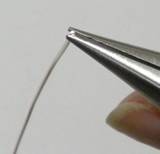
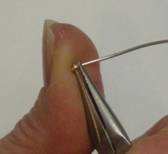

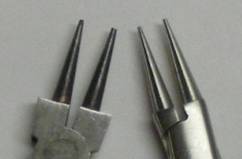
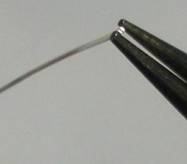
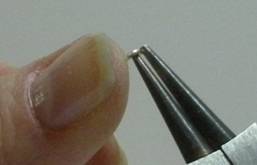
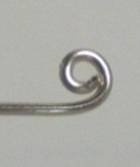

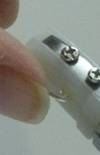
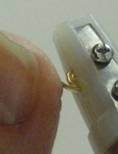

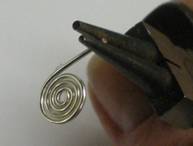
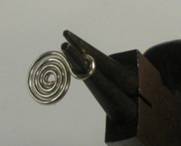
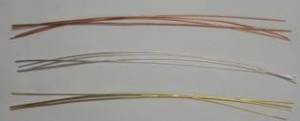
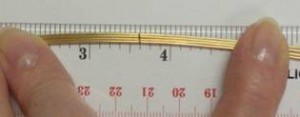
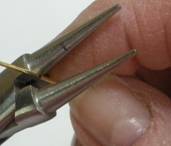
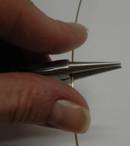
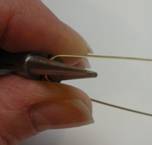

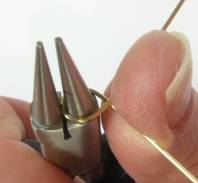

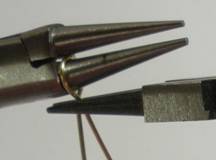
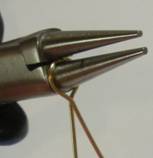
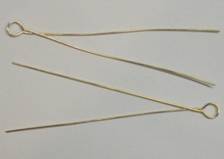
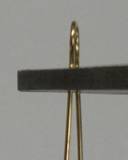
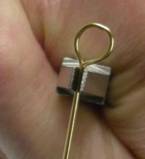
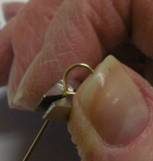


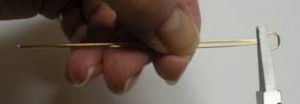
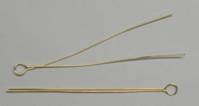
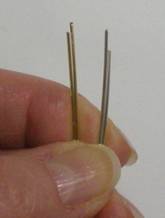
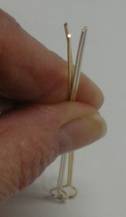
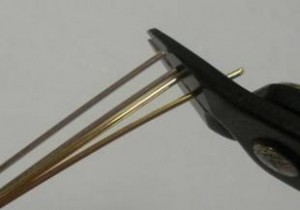

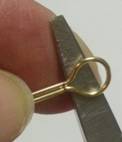
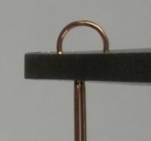

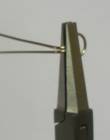
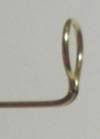


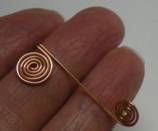

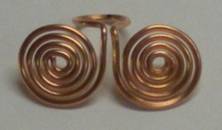
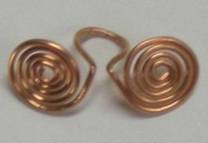
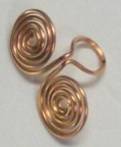
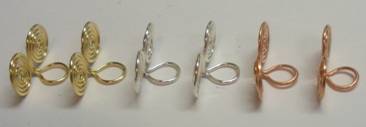
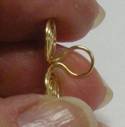
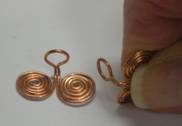
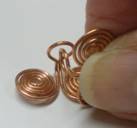
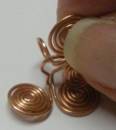
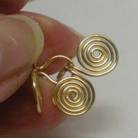
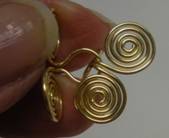
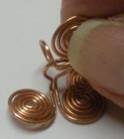
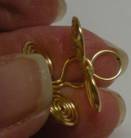
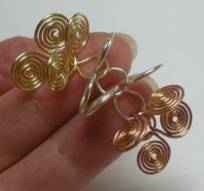
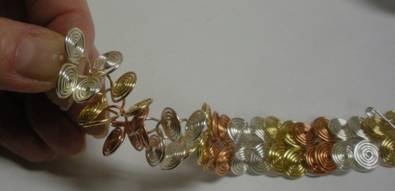


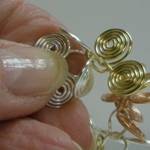
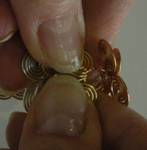
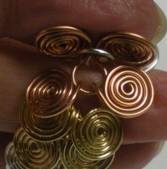
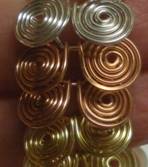


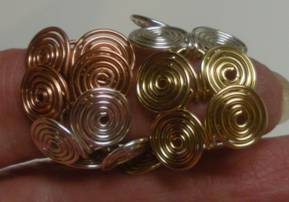

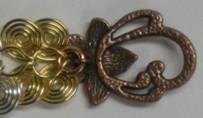
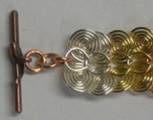

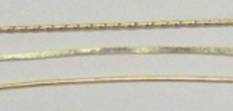


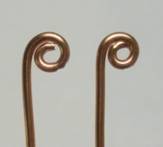
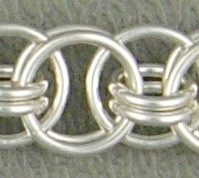
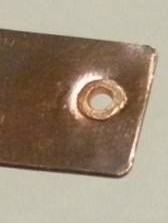
















Heather Gale
May 31, 2016 at 12:14 am
This is a very concise and easy instruction. I’ve always done it more difficult or maybe I’ve made it more difficult for myself. ★☆´◔ˬ◔ˋᵗʰᵃⁿ۹☆★ I might actually make more ´◔ˬ◔ˋ ツ
x Heather x